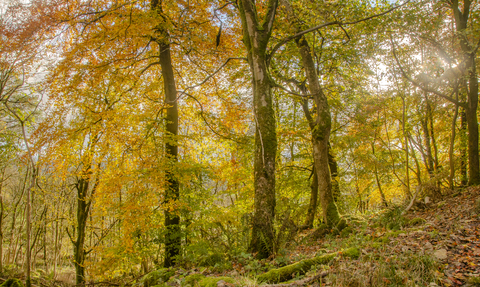
WildNet - Durham Wildlife Trust

Marbled white butterfly on a common spotted orchid in a wildflower meadow © Tom Marshall
Leyburn Old Glebe Nature Reserve
Location
Know before you go
Dogs
Please respect the unique flora of this reserve by keeping dogs on a short lead.
When to visit
Opening times
Open at all times. We recommend a 1 hour outing for this reserve, or further indulge your love of wildflowers with a visit to Seata Quarry, seven miles away.Best time to visit
May to JuneAbout the reserve
If you love wildflowers, you need to visit Leyburn Old Glebe. Simple as that. In fact, you’ll probably want to visit more than once. At the springtime height of its botanical bounty, the colours seem to change every couple of weeks, as plants come into flower, then fade to be replaced by equally beautiful species. It’s the richest remaining fragment of Ellershaw, a district well-known to naturalists since the 19th century. More than 80 plant species have been recorded here, including salad burnet, wild thyme, fairy flax, cowslips and agrimony. And if you enjoy seeking out orchids, see if you can find green winged, common spotted, early purple, bee, and the nationally scarce burnt-tip.
As you might expect, this decadent carpet of flowers attracts plentiful butterflies, including masses of orange-tips, along with small skipper, common blue and dark green fritillary. Redstarts sing from the large trees along the hedgerows, and ospreys are frequently seen hunting along the river.
Habitat
Contact us
About
Leyburn Old Glebe is a botanically rich hay meadow which was owned by a local church before it came into Yorkshire Wildlife Trust’s ownership in 1983. The site has never been ploughed or re-seeded and has been managed as a traditional hay meadow, which has allowed high botanical diversity to be retained.
The site is a fine example of the type of species-rich flower meadow that would have been common in the Yorkshire Dales before agricultural intensification resulted in the improvement of grasslands.
Over 80 plants have been recorded in recent surveys. Plants of interest on site include salad burnet, wild thyme, fairy flax, cowslips, agrimony and orchids including green winged, common spotted, early-purple, bee, and the nationally scarce burnt-tip.
The best time to visit the site is in May and June when the flowers are at their best and butterflies such as small skipper and common blue can be seen.
In autumn a hay cut will have been taken and sheep will be grazing the field to ensure that botanical diversity within the sward is maintained. Winter is a quiet time at the meadow, but common bird species will still be present within the surrounding hedgerows and you may get to see a stoat passing through.
The site is located on a south facing, gently sloping bank above the River Ure with views over the Yorkshire Dales to Penhill and to the ridge above Coverdale which rises towards Great Whernside. To the north is the wooded limestone scar of Leyburn Shawl.
The reserve's small size makes for a fragile site susceptible to damage, so please enjoy but take care when visiting.
Seasonal highlights
- Spring: Plants -Salad burnet; Cowslip; Green-winged orchid; Burnt-tip orchid
- Summer: Plants - Eyebright; Fairy flax: Invertebrates - Common blue
- Autumn: Birds - Yellowhammer
- Winter: Mammals - Stoat
Directions
Public transport
Buses running between Leyburn and Hawes stop in Wensley half a mile away.
By car
From Hawes take the A6108 to Wensley, then turn onto Low Lane. The nature reserve is on this road.
Did you know?
The burnt-tip orchid gets its name from the unopened dark purple flowers at the top, which appear burnt compared to the paler, open flowers below it.

The autumn colours were even more beautiful when the sun came out
Photo Credit - Telling our Story Volunteer, Sara

